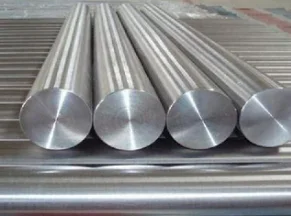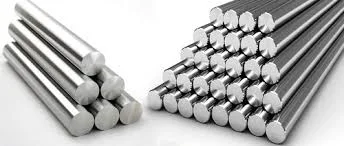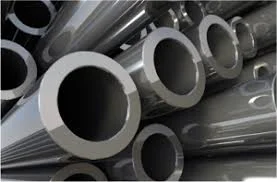High-temperature alloys play a crucial role in various industries where extreme heat and harsh conditions are a constant challenge. These alloys are specifically designed to withstand elevated temperatures while maintaining their structural integrity and performance. In this article, we will delve into the applications and advantages of high-temperature alloys, shedding light on their importance in industries such as aerospace, power generation, automotive manufacturing, and oil and gas.
Applications in Aerospace Engineering
In the aerospace industry, high-temperature alloys are utilized in critical components such as turbine blades, combustion chambers, and exhaust systems. These alloys exhibit exceptional heat resistance, allowing engines to operate at higher temperatures and achieve greater efficiency. High-temperature alloys also contribute to weight reduction, enabling aircraft to carry more payload while maintaining structural integrity. The ability of these alloys to withstand extreme temperatures and corrosive environments makes them indispensable in the aerospace sector.

Advantages in Power Generation
Power generation plants, whether nuclear, thermal, or renewable, operate under extreme temperatures and pressures. High-temperature alloys are extensively used in the construction of boilers, heat exchangers, and steam turbines. These alloys possess excellent creep resistance, which ensures the structural stability of components subjected to prolonged exposure to high temperatures. By withstanding the harsh conditions, high-temperature alloys contribute to the efficiency and reliability of power generation systems, ultimately reducing downtime and maintenance costs.
Enhancing Automotive Manufacturing
In the automotive industry, high-temperature alloys find applications in exhaust systems, turbochargers, and engine components. These alloys offer superior heat resistance, enabling engines to operate at higher temperatures without compromising performance. By withstanding the intense heat generated during combustion, high-temperature alloys contribute to improved fuel efficiency and reduced emissions. Additionally, their high strength-to-weight ratio allows for the design of lighter and more fuel-efficient vehicles.
Oil and Gas Industry Challenges
The oil and gas industry operates in some of the harshest environments, including high-pressure and high-temperature (HPHT) conditions. High-temperature alloys are essential in the construction of drilling equipment, valves, and pipelines that are exposed to extreme temperatures and corrosive fluids. These alloys exhibit excellent resistance to oxidation, sulfidation, and corrosion, ensuring the integrity and longevity of critical components. By withstanding the harsh conditions, high-temperature alloys contribute to the safety and efficiency of oil and gas operations.

Comparative Analysis: High-Temperature Alloys vs. Traditional Materials
When compared to traditional materials like carbon steel, high-temperature alloys offer several advantages. Traditional materials tend to lose their strength and structural integrity at elevated temperatures, limiting their applications in high-temperature environments. High-temperature alloys, on the other hand, maintain their mechanical properties even at extreme temperatures, making them ideal for demanding applications. The ability to withstand thermal cycling, oxidation, and corrosion sets high-temperature alloys apart from traditional materials, ensuring reliable performance in challenging conditions.
Future Innovations and Emerging Trends
As industries continue to push the boundaries of temperature and performance, the development of new high-temperature alloys is an ongoing process. Researchers are exploring advanced alloy compositions, microstructural modifications, and surface treatments to enhance the properties of these alloys further. The focus is on improving creep resistance, oxidation resistance, and corrosion resistance, while also reducing costs and environmental impact. The future of high-temperature alloys holds great promise, with the potential to revolutionize industries and enable the development of more efficient and sustainable technologies.
Maintenance and Care Tips
To ensure the longevity and performance of high-temperature alloys, proper maintenance and care are essential. Regular inspections, cleaning, and monitoring of operating conditions are crucial to identify any signs of degradation or damage. It is important to follow manufacturer guidelines for maintenance and avoid exposure to corrosive substances or excessive thermal cycling. By implementing appropriate maintenance practices, industries can maximize the lifespan and performance of high-temperature alloys, ultimately reducing downtime and replacement costs.

Conclusion
High-temperature alloys are indispensable in industries that operate under extreme heat and harsh conditions. Their exceptional heat resistance, mechanical strength, and corrosion resistance make them vital for applications in aerospace, power generation, automotive manufacturing, and oil and gas. As industries continue to evolve, the development of new high-temperature alloys will pave the way for more efficient and sustainable technologies. By understanding the applications and advantages of high-temperature alloys, industries can harness their potential to overcome the challenges posed by extreme temperatures and achieve enhanced performance and reliability.
For more than ten years,Yuesuan Trade has adhered to the mission of building a "trustworthy plate supplier" and focused on providing professional steel services to domestic and foreign customers.
If you are looking for high-temperature alloys solution,welcome to ccontatc us.


